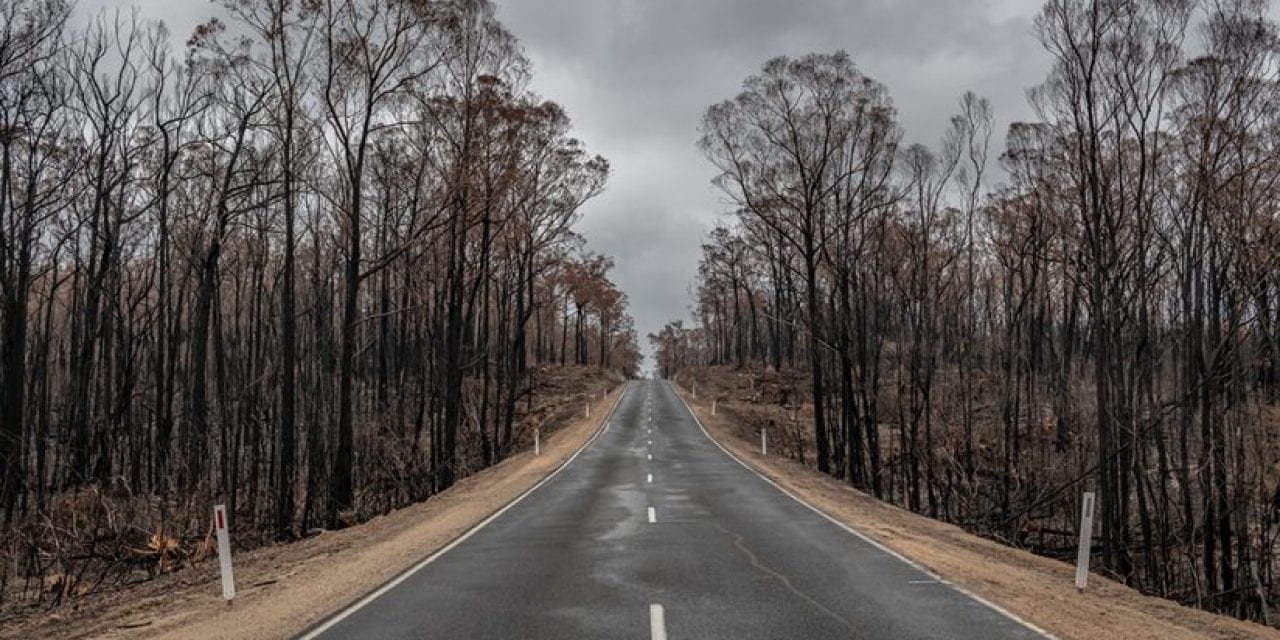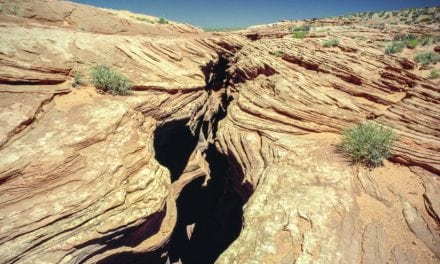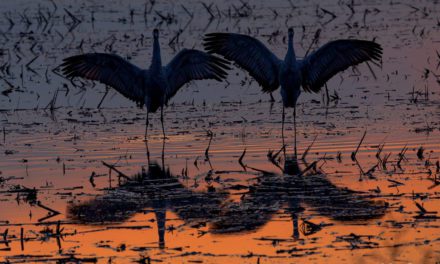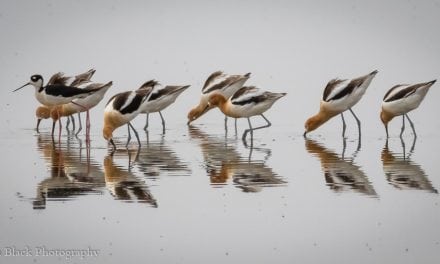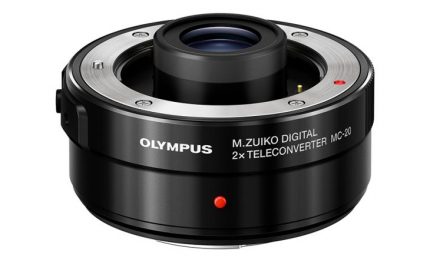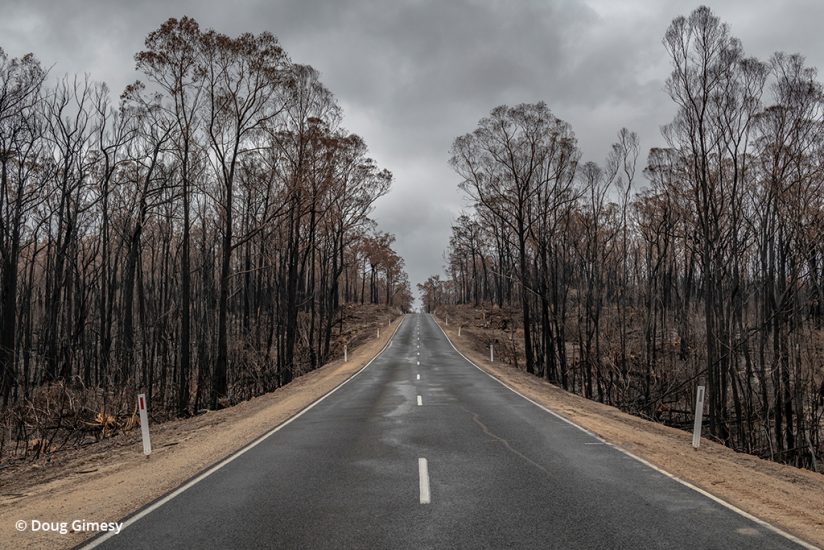
Burnt trees line the Bruthen-Buchan Road, south of Buchan, Victoria.
Over 30 million acres burned during Australia’s 2019-2020 summer of hell. That’s 12 times the recent Amazon fires and more extensive than ever before in recorded history. The intensity (how much heat was generated) and the severity (the amount of damage to vegetation) were both at record levels. Wet forests burned. Rainforests burned. And experts say some habitats will never be the same. Add to this the animal welfare impacts, with over a billion mammals, birds and reptiles burnt to death and the hundreds of millions of animals that are still suffering and dying from exposure, starvation, injury or dehydration, and I don’t think the expression “disaster” is too strong a term.
As a conservation and animal welfare photojournalist based in Australia, three months before the bushfires hit, I was reflecting on the way bushfires are normally reported as “hectares (or acres) of bush lost” versus a measure of wildlife burnt—something that has always bothered me. It seems one dimensional and doesn’t demonstrate the pain and suffering of wildlife during bushfires. So before the Australian 2019-2020 bushfires broke out, I had already decided I would cover the bushfires this season and the impact on wildlife to try and change how we talk about the impact of fire.
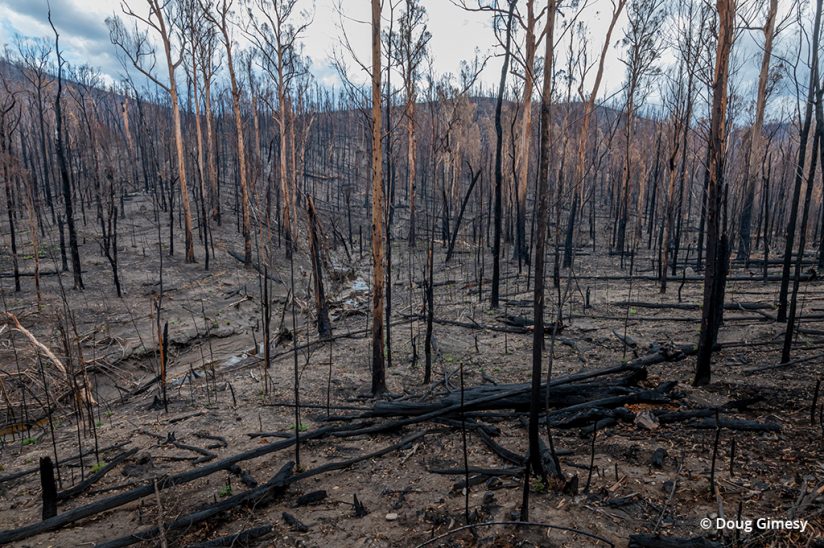
Martins Creek, Nurran, Victoria, and surrounding areas show the devastation of the fires. Before the fires went through, wet temperate rainforest ran along its edge, bounded by wet and damp forests.
Because of this, I had already done a lot of preparation (or so I thought) for the 2019-2020 season. I had completed media fire training and received my media pass so I could gain access to restricted areas. I had purchased much of my fire Personal Protective Equipment (PPE), so I’d be safe in the field. I’d pulled together everything I’d need to camp for a few weeks and all the camera equipment I might need. I had also started to let friends and contacts who work in the fire department, the parks services, and forestry and wildlife know that this was my plan and asked if they could help facilitate things when summer came. Of course, I wasn’t nearly as prepared as I thought for the extent, duration or ferociousness of the fires that came, but I’ll get back to that.
Saving Koalas
One species severely impacted by these fires was the iconic koala. Koalas have a hard time escaping the flames. They’re not fast, like kangaroos, and can’t burrow underground like wombats. Since the fires, it’s been estimated that between 25 to 50 percent of the species has perished.
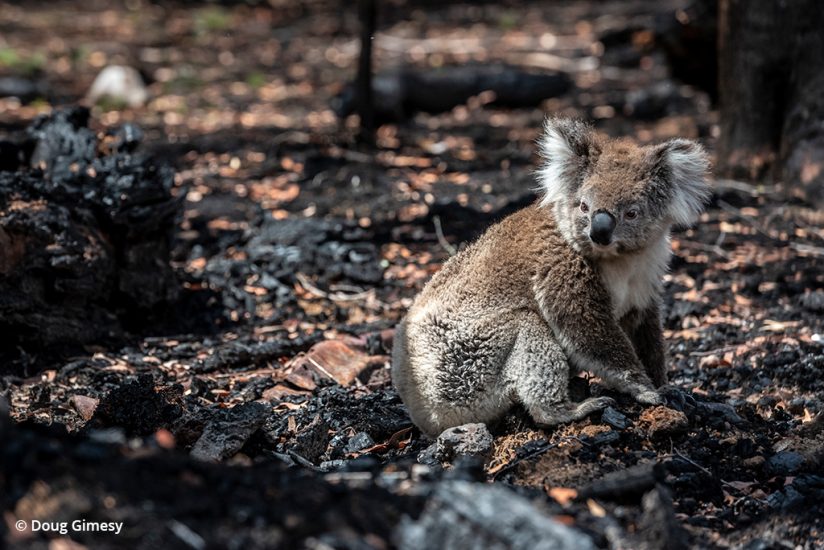
A koala that came down from a tree after bushfires passed through sits on the burnt ground with nowhere to go. It was collected by a Forest and Wildlife officer and then taken into care, to be released once it passed a health check.
Of course, during a disaster or in any time of crisis, it’s easy to focus on the negative, the horrible and the distressing. But during these times, there are also big-hearted people out there who swing into action to help. Some are fully trained and prepared, and some are not. Some end up in the spotlight, while the efforts of many go unrecognized, but all work tirelessly to do what they can. I wanted to focus on this, and specifically on the work that went into helping the koalas, because rescuing, rehabilitating and releasing koalas is tough. Really tough.
Many places where koalas may be found are physically difficult and unsafe to get to in times of an emergency. Koalas may be many kilometers from any clear access point (roads or tracks), and those roads maybe blocked, on fire or closed. And if you can get to them, most koalas are found high up in the treetops, making inspection and rescue difficult.
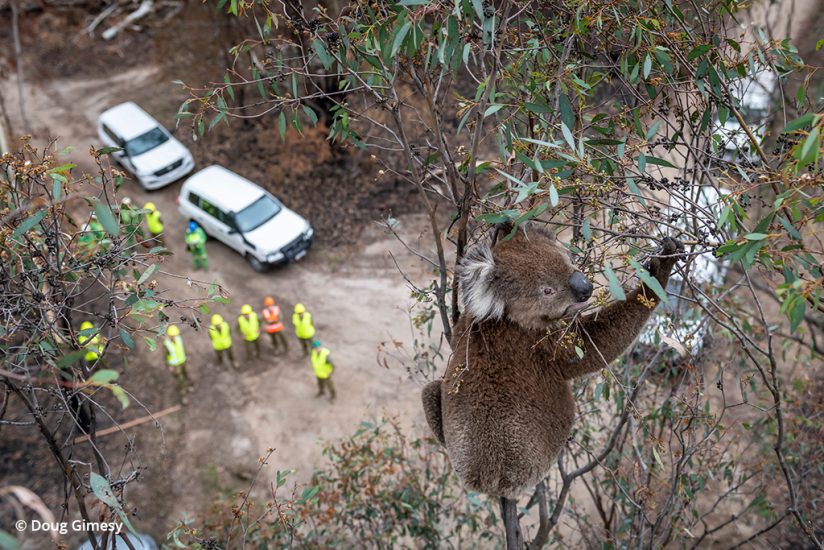
A koala that survived the bushfires at Gelantipy, Victoria, sits in the top of a tree, just before having a visual inspection for its health. If it was determined that a closer examination was required to determine the animal’s health, it was brought down via a cherry picker, which is where I took this image from.
Once rescued, koalas are also incredibly hard to treat successfully. Their gut flora, for example, is delicately balanced for the digestion of specific types of eucalyptus leaves. Stress and antibiotic treatment can upset their gut so much that they can’t process their food and starve to death. And even if the burns to their hands and feet heal, the resulting scar tissue can compromise their ability to open their hands and climb trees.
Hoping to tell these stories of rescue, rehabilitation and release, I had the opportunity to spend a month in the field with support from the International League of Conservation Photographers, Environment Victoria and Wildlife Victoria. I want to share what I learned about photographing environmental disasters, as I think some of my experiences may be useful not only in this genre but in other photography as well.
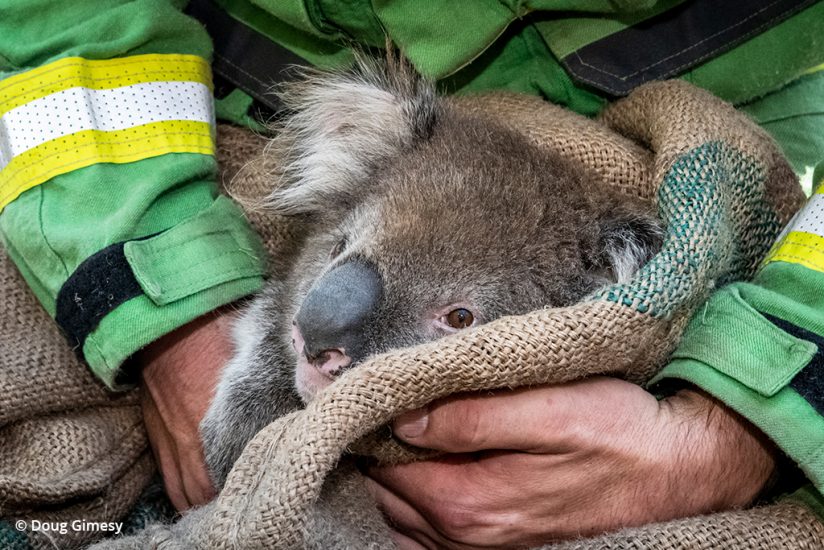
A koala is given a preliminary health check before being transported to the wildlife triage center.
Preparing For Disaster Photography
During my five weeks in the field, I saw streams that used to be crystal clear were now filled and made shallow with the sludge of ash and soil. I saw areas that were once rainforest burnt to a blackened landscape. I had the chance to go into active fire areas with rescue teams and be lifted over 100 feet into the air while visual health checks were done on koalas in trees. I saw animals that managed to survive the initial fires but with horrific injuries and no chance of rescue.
I flew in a Royal Australian Air Force C-27J Spartan transport as it evacuated burnt koalas from Mallacoota. I sat in an in-field triage surgery van while a koala was anesthetized and had her burns debrided. I accompanied the police as they flew their drones looking for koalas in trees and had coffees in the homes of koala caregivers as they cried about how they couldn’t do enough to help.
I learned a lot—about myself, about fire, about wildlife, but mostly about taking photographs during an environmental catastrophe. I want to say up front that I’m not expert in this area, but after a month in the middle of the worst Australian bushfires on record, reflecting upon what worked—and what didn’t—I think that for anyone considering this genre of photography, I can offer five pieces of advice, all with very different considerations but with the same theme: Prepare way ahead of time.
1. Tactical Preparation
- Safety and disaster skills. Once a disaster hits, it’s probably too late to decide to develop the skills and knowledge that you’ll need in the field to ensure both your and others’ safety. Get up to speed with these as early as possible.
- When possible, organize these ahead of time. Like skill preparation, acquire whatever accreditation you may need well beforehand. During times of crisis, it’s near impossible to get these quickly. Certainly, a press pass may go part of the way; however, the number of photojournalists who came to Australia to cover the fires and were then denied access to some areas because they hadn’t arranged for appropriate accreditation ahead of time was substantial. Add to this that by the time a disaster is happening, the emergency body that deals with such accreditation is probably (and understandably) more focused on the crisis than dealing with photographers’ applications.
- Personal Protective Equipment (PPE). You will probably need special clothing or gear in many disaster situations (fire protective equipment, UHF radio, personal locator beacon). Again, similar to safety training, waiting until a disaster situation occurs to think about getting gear may well mean you actually can’t find any, as a lot of other people are also trying to find it. During the 2019-2020 fires, for example, by January, it was very difficult to find fire-protective boots, helmets and face masks.
- Photographic equipment. Think hard about what you’ll need. Whatever you use, it will need to be able to take a few knocks and probably handle dust and moisture. You don’t want to carry too much, but remember, you probably can’t just pop out and grab some extra gear when in the field. In my case, as I didn’t want to be changing lenses in a heavily smoke-filled environment, and also didn’t know what power sources I’d have access to, I took three camera bodies (I had to purchase one) with 16-35mm, 24-70mm and 70-200mm lenses attached, and those lenses didn’t come off the camera bodies for five weeks. I also had two batteries for each, a rain kit, a lens cleaning kit and a battery charger that worked in my car.
2. Physical Preparation
Covering catastrophes can mean very long, tough days. Some days I worked for 20 hours in extreme environments (110 degrees Fahrenheit), which feels even hotter when you’re wearing fire protective clothing and climbing around obstacles, all while carrying equipment. How fit do you need to be? That’s hard to say, but because of my type of work, I do a lot of balance exercises—the last thing I want to do is fall in the field.
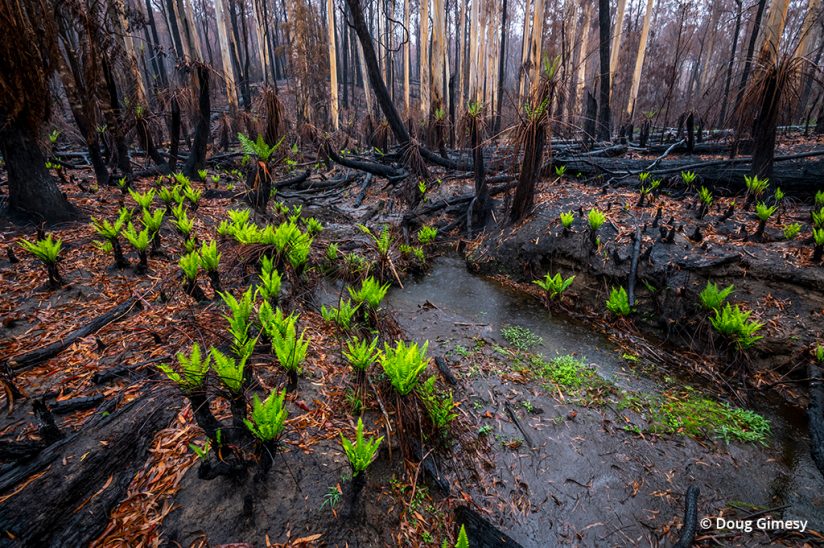
Hard tree ferns send out new green fronds after rains and just a few weeks after bushfires passed through the area, Martins Creek, Nurran, Victoria.
3. Emotional Preparation
It’s tough photographing devastation, and especially so if you are emotionally invested in what you are covering, so you need to be ready and appreciate that you may well see things you wish you hadn’t. Also, working extremely long hours can diminish your emotional resilience. I’m lucky (or not) that at the time, I was able to partly disassociate from what I was witnessing and just get on with the job—or, to quote Pink Floyd, become “comfortably numb.” But when I got home, uploaded my images and started to look at them in the quiet of my office, that’s when it hit me. Having covered wildlife trauma and animal welfare issues before, I had some coping mechanisms in place, but for me these three things are really important:
- Recognize that what you are about to cover may have a negative emotional impact on you.
- Get to know the types of impacts that may occur and be on the lookout for them. Things like vicarious trauma, secondary traumatic stress, burnout or compassion fatigue are now on my radar. (See “Types Of Emotional Impacts” below for more on these.)
- Have some professional help (for example, a counselor) in place just in case you need it, and don’t be too proud to use it and reach out.
4. Clearly Define Your Role
During the fires, one thing I hadn’t thought about or prepared for was what my role would—and wouldn’t—be. Sure, I was there as a photojournalist to cover what was happening, but what if someone or something needed help? What if I see an animal in distress, and I’m the only person there? Should I keep shooting or put the camera down and help? Only you can decide what works for you and what is “right,” but think about it beforehand. I decided that if I can help, I will. I may quickly blast off a few shots and then step in. I’ve made the decision that I do what I do because I care, so stepping in to help if required seems the right thing to do.
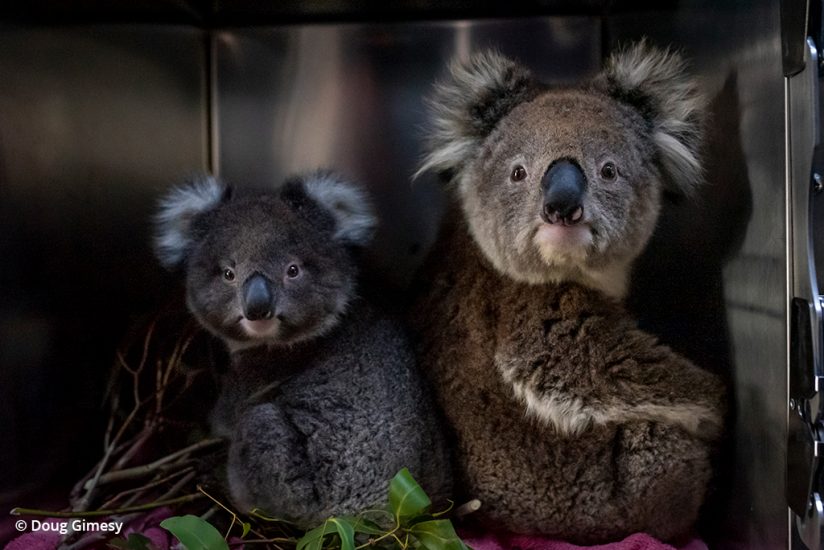
A mother koala and her young daughter sit inside their enclosure at a mobile wildlife triage center in Bairnsdale, Victoria, that was set up to treat wildlife following the bushfires. The mother was brought in for treatment to burns to her feet.
5. Build Relationships
If you can’t get access to places and people to create impactful images, what’s the point? This is why solid, long-term relationships are so valuable. Having these means that you get not only good information and quickly but also (potentially) access to places and situations that others may not.
For example, the image of the koala taken from above was in an active fire zone and was only possible because I had built strong and trusting relationships—indeed, some friendships—with the people in charge over a two-year period. They actually told me about it and invited me along. No other photographer or journalist was briefed or given access.
Similarly, getting onto an air force plane to cover koala evacuations from Mallacoota was only possible for the very same reason—they knew me well and also trusted me to do the right thing. I can’t stress this strongly enough for this type of photography, or indeed any photography involving people: Invest in long-term relationships now.
Types Of Emotional Impacts From Photographing Disasters
- Vicarious trauma. The experience of trauma symptoms that can result from being repeatedly exposed to other people’s trauma and their stories of traumatic events or being repeatedly exposed to trauma impacting wildlife and the environment.
- Secondary traumatic stress. The emotional duress when someone hears about the trauma experiences of another.
- The prolonged physical and psychological exhaustion related to this kind of work.
- Compassion fatigue. The stress that comes from continually wanting to help those who are traumatized or under significant emotional duress.
The Value Of Disaster Photography
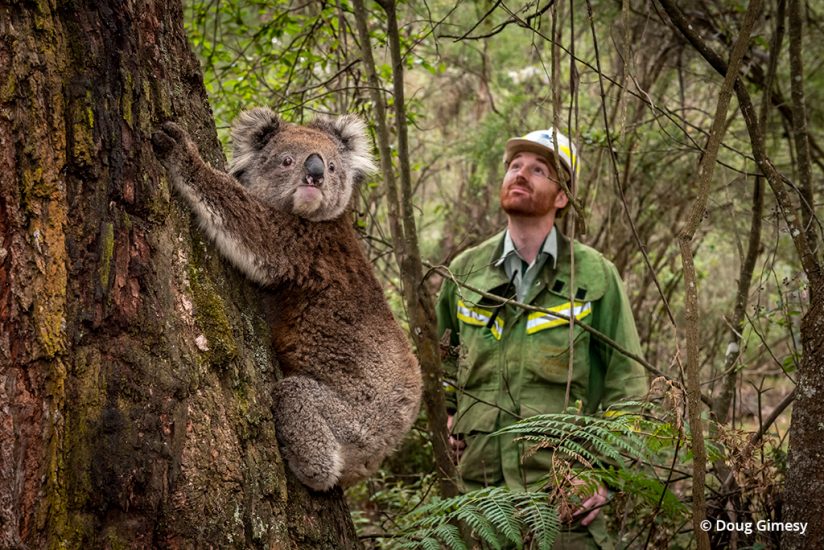
A female koala who had been in care for burns to her feet is released in the Colquhoun State Forest by senior Forest and Wildlife officer Lachlan Clarke.
For me, environmental disaster photography is important. This is not simply because of its eye-catching newsworthiness nor because it’s different than most other types of environmental or nature photography. You have the chance to capture and share not only the devastation but also the best of humanity—those who are working selflessly to make things better.
When I set out to cover bushfires, I didn’t plan to cover such a huge catastrophe as the one we had last summer, but I now feel it’s probably one of the most significant pieces of work I’ve ever done. Sadly, I fear the opportunity to do this type of photography will become more common.
Sure, it’s not easy (physically, emotionally and probably financially) but if you do it with the right motivations and the right preparation, I guarantee it will be some of the most memorable, meaningful and rewarding photography you will probably ever do.
See more of Doug Gimesy’s work at gimesy.com.
The post Koala Rescue appeared first on Outdoor Photographer.

